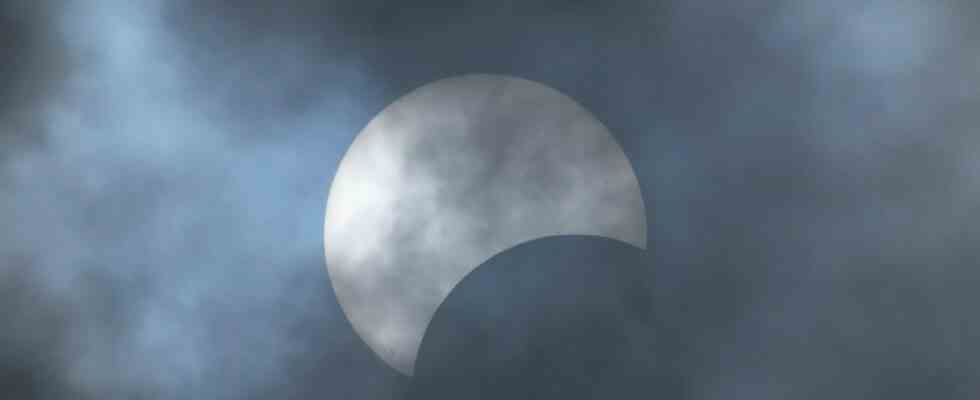A partial solar eclipse can be observed in Germany this Tuesday. It lasts about two hours and can be seen all over Central Europe – theoretically. In practice, you don’t get much out of it when the sky is overcast, which is currently quite likely depending on your location.
The last partial solar eclipse was visible in Central Europe in June last year, the next one will not be here until the end of March 2025. Depending on the location, the moon will cover between around 20 and more than 30 percent of the star in the center of our solar system, said the Association of Star Friends. Viewed from Kiel, the moon begins to move in front of the sun at 11.07 a.m., in Berlin as well as in Cologne at around 11.10 a.m., in Munich the spectacle begins shortly after 11.14 a.m. Around an hour later, the maximum coverage is reached, which decreases from northeast to southwest.
However, the visibility conditions are likely to vary greatly from region to region: the German weather service DWD has announced changing clouds with individual showers for Tuesday, especially in the northern half of Germany. In Bavaria, too, it should often remain cloudy north of the Danube until the afternoon. In the south of Bavaria and in south-west Germany it should be cloudy or even sunny.
As always, never observe with unprotected eyes
As with any solar eclipse, the Federal Office for Radiation Protection (BfS) warns against observing the event unprotected – whether with the naked eye, through binoculars, cameras or telescopes. According to the Federal Office, the solar eclipse glasses used for observing with the naked eye should be considered safe according to EU standards, must not have any scratches or holes and should be as close as possible to the face. A direct and unprotected look can damage the retina in a very short time.
No more than 0.001 percent of sunlight should get through the glasses. Conventional sunglasses or welding goggles, but also other possible expedients are not suitable. For optical devices there are special filter attachments or foils in specialist shops.
A solar eclipse is a relatively rare event because several factors must come together for it to happen. In principle, it can only occur at new moon when the moon is between the earth and the sun. Due to the inclination of the moon’s orbit, the earth’s satellite usually passes above or below the line connecting the earth and the sun. In most years, the constellation is twice such that the moon completely or partially obscures the sun when viewed from any place on earth, also the current event is the second and last this year. However, up to five solar eclipses per year are possible, which is very rare. The next total solar eclipse visible from Germany will not take place until September 3, 2081.

